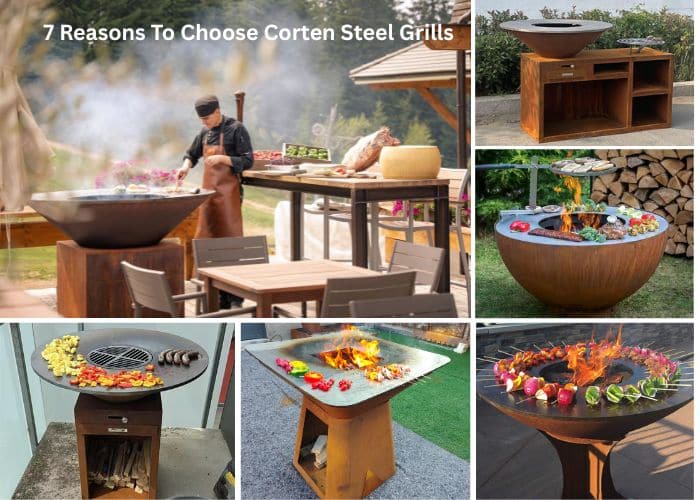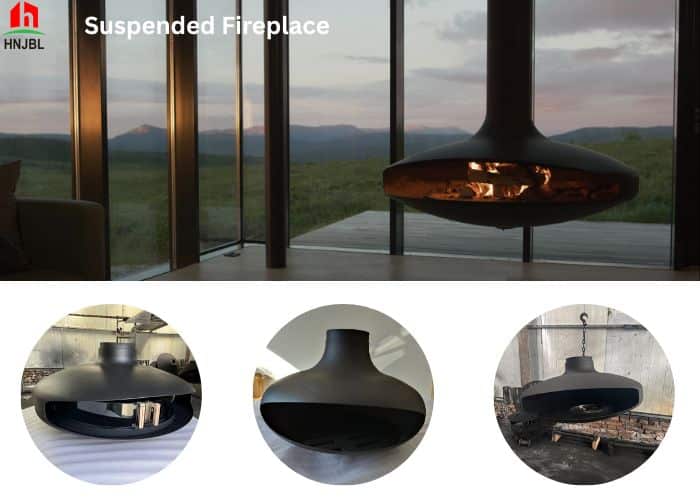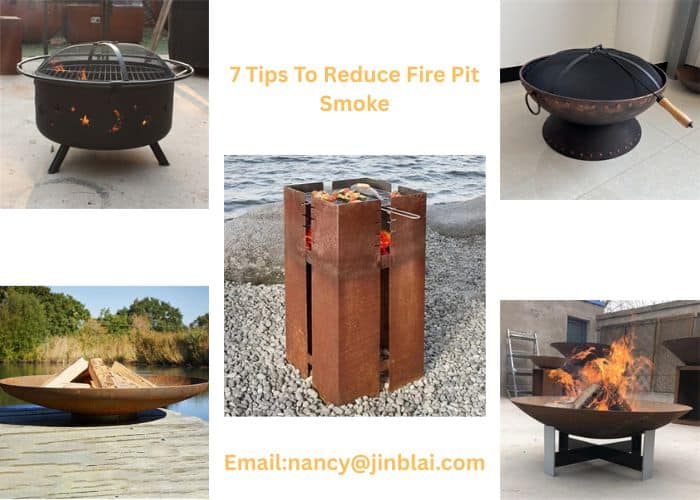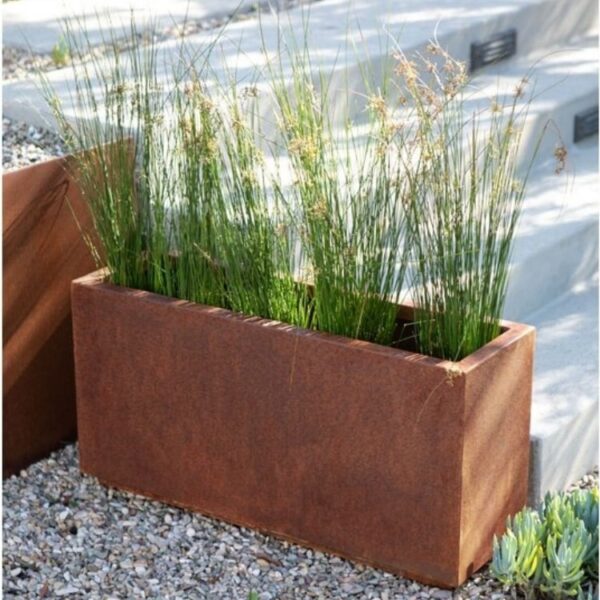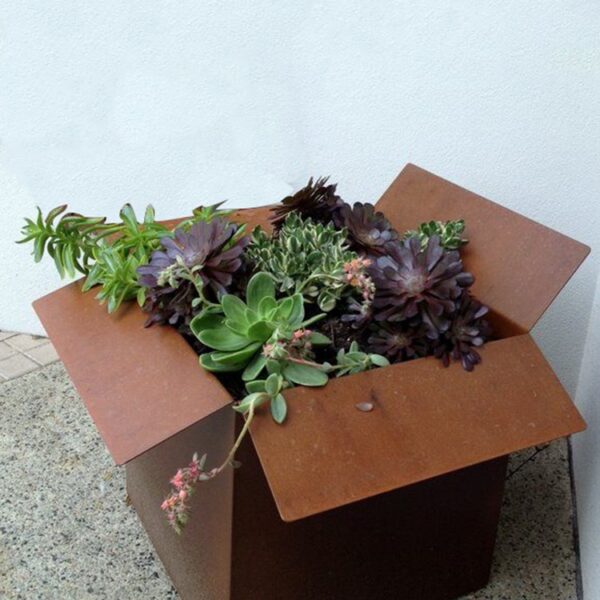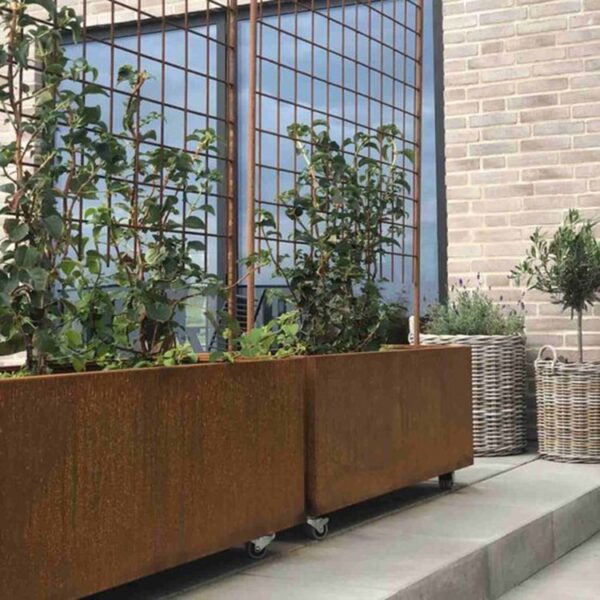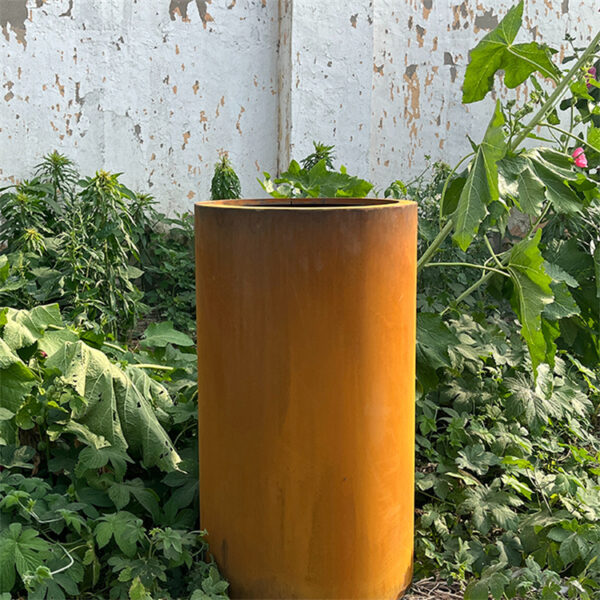
As a gardening product that is both practical and decorative, corten steel flower pots have become more common in landscape design, home decoration and urban greening in recent years. The rust layer formed on its surface not only gives the flower pots a simple and natural texture, but also effectively protects the internal structure from further corrosion. However, the rusting process of corten flower pots does not occur naturally to achieve the ideal effect. Human intervention is often required to accelerate or control the rusting process to meet specific aesthetic needs or usage scenarios. So, how to rust corten steel flower pots quickly? This article will describe the rusting operation steps of corten steel flower pots in detail.
What Is Corten Steel?
Corten(Weathering) steel is a steel made by adding a small amount of alloy elements such as copper, nickel, chromium, and phosphorus to ordinary carbon steel. These alloy elements can form a dense oxide protective layer (rust layer) on the surface of the steel, effectively slowing down the further corrosion of the steel by the external environment. Compared with ordinary steel, the corrosion resistance of weathering steel can be increased by 2-8 times, and it can be exposed to the atmospheric environment for a long time without additional coating protection. The color of the rust layer of weathering steel usually gradually evolves from the initial light yellow to dark brown or reddish brown, showing a natural metallic texture.
Unique Advantages Of Corten Steel Flower Pots
Corten steel flower pots have significant advantages in gardening and landscape design due to their material characteristics:
- Aesthetic value: The rusted surface of the corten steel flower pot presents a warm reddish brown tone, which contrasts sharply with the green of the plants, and can add a retro and natural atmosphere to the garden, balcony or indoor space.
- Durability: Corten steel flower pots do not require frequent maintenance, and their rust layer can effectively resist wind and rain erosion, and their service life can reach decades.
- Environmental protection: Weathering steel does not require painting or chemical anti-corrosion treatment, which reduces pollution to the environment and conforms to the concept of sustainable development.
- Diversity: Corten steel flower pots can be processed into various shapes and sizes according to design requirements to meet different planting needs and decorative styles.
The Principle Of Rusting Of Corten Steel Flower Pots
The Chemical Nature Of The Rusting Process
The rusting process of corten steel is essentially a controlled oxidation reaction. When weathering steel is exposed to humid air, the iron on the steel surface reacts with oxygen and water to form iron oxide(Fe2O3) commonly known as “rust”. However, unlike the loose, easily flaking rust layer of ordinary steel, the alloying elements in weathering steel (such as copper, chromium, and nickel) promote the formation of a dense, stable oxide layer. This rust layer has the following characteristics:
- Density: The rust layer adheres tightly to the surface of the steel, preventing further penetration of oxygen and moisture.
- Self-repairability: Even if the rust layer is partially damaged, the alloying elements can promote the formation of a new oxide layer to repair the damaged area.
- Aesthetic effect: The color of the rust layer changes over time, from light yellow to dark brown or reddish brown, showing a natural gradient effect.
Factors Affecting The Rusting Process
The rusting speed and effect of corten steel planter pots are affected by a variety of environmental factors:
- Humidity: A humid environment can accelerate oxidation reactions and promote the formation of rust layers.
- Temperature: Higher temperatures usually speed up chemical reactions, but too high a temperature may cause the rust layer to dry and crack.
- Oxygen content: Adequate oxygen is a necessary condition for oxidation reactions, and a well-ventilated environment is conducive to rusting.
- Salt: Environments near the ocean or using salt solutions accelerate rusting, but may cause the rust layer to be too loose.
- Time: Natural rusting usually takes months to years to form a stable rust layer.
Comparison Between Natural Rusting And Artificial Rusting
Rusting of corten steel flower pots can be achieved through natural exposure or artificial intervention. Natural rusting depends on environmental conditions, the process is slow and the results are uncontrollable, and it may take months or even years to achieve the desired rusting effect. Artificial rusting accelerates oxidation reactions through chemical solutions or physical methods, can complete rusting within hours to days, and the color and uniformity of the rust layer are easier to control. Therefore, for scenes that pursue quick results or specific aesthetic needs, artificial rusting is a more common choice.
Natural Rusting Method For Corten Flower Pots
Basic Principles Of Natural Rusting
Natural rusting refers to placing corten steel flower pots in an outdoor environment and using the humidity, oxygen and temperature changes in nature to promote the formation of a rust layer on the steel surface. This method does not require additional chemical treatment and is suitable for users who pursue natural effects and are not in a hurry to complete rusting.
Steps Of Natural Rusting
1. Clean the surface of the flower pot:
- Wipe the surface of the flower pot with a neutral detergent and a soft cloth to remove oil, dust or other impurities.
- Avoid using detergents containing acidic or alkaline ingredients to avoid interfering with subsequent oxidation reactions.
2. Choose a suitable placement environment:
- Place the flower pot in a well-ventilated and high-humidity area outdoors, such as a courtyard, terrace or garden.
- Avoid being in a waterlogged or completely dry environment for a long time to avoid affecting the formation of the rust layer.
3. Spray water regularly:
- In dry seasons or areas, you can spray an appropriate amount of clean water on the surface of the flower pot with a spray bottle every day to keep the surface moist.
- After spraying water, let the flower pot dry naturally to avoid water accumulation and rust peeling.
4. Wait patiently:
- Natural rusting usually takes 3-12 months to form a preliminary rust layer, and a stable dark brown rust layer may take 1-3 years.
- Check the surface of the flower pot regularly to observe the changes in the color and uniformity of the rust layer.
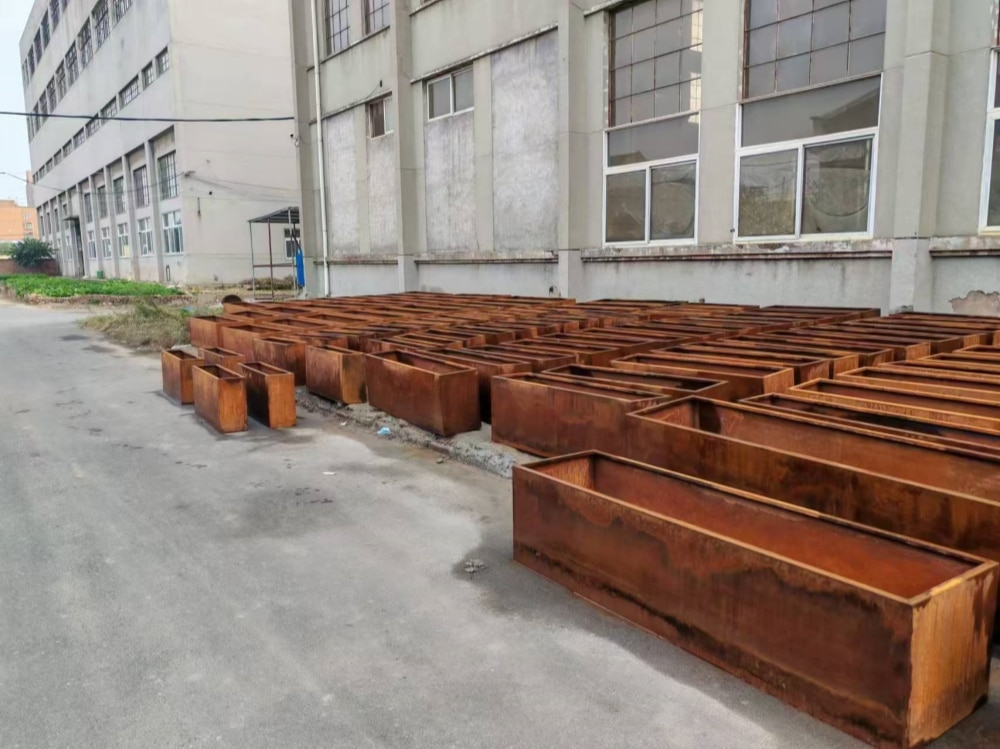
Advantages And Disadvantages Of Natural Rusting
Advantages:
- No chemical agents are required, which is environmentally friendly and low cost.
- The rust layer forms naturally, showing a unique gradient effect.
Disadvantages:
- Rusting is slow and the effect is uncontrollable.
- Affected by environmental factors, it may cause uneven rust layer.
- The initial rust layer may peel off or have color difference.
Artificial Rusting Method Of Corten Steel Flower Pots
Advantages Of Artificial Rusting
Artificial rusting can form a uniform and stable rust layer in a short time by using chemical solutions or physical methods to accelerate the oxidation reaction. Its main advantages include:
- Fast speed: Rusting can usually be completed within a few hours to a few days.
- Strong controllability: the color, thickness and uniformity of the rust layer can be adjusted according to needs.
- Wide adaptability: suitable for various climatic conditions and indoor and outdoor scenes.
Preparation For Artificial Rusting
Before artificial rusting, the following preparations need to be made:
Safety Protection:
- Wear protective gloves, goggles and masks to avoid chemical solutions from contacting the skin or inhaling harmful gases.
- Operate in a well-ventilated area, away from fire and children.
Cleaning Flower Pots:
- Use sandpaper or wire brush to gently polish the surface of the flower pot to remove oxide scale or processing residues.
- Wash the flower pot with a neutral detergent to ensure that there is no oil or impurities on the surface.
Prepare Tools and Materials:
- Chemical solution: Common solutions include sodium chloride (salt), acetic acid (white vinegar), hydrogen peroxide (hydrogen peroxide) or commercially available rusting agents.
- Tools: spray bottle, brush, sponge, plastic container, clean water.
- Protective materials: plastic sheeting or newspaper to protect the surrounding area from solution contamination.

Common Artificial Rusting Methods
The following are three common artificial rusting methods suitable for corten steel flower pots:
Method 1: Salt Water And Acetic Acid Solution Method
Prepare the Solution:
Add 100 grams of table salt and 200 milliliters of white vinegar to 1 liter of clean water and stir evenly.
The solution ratio can be adjusted according to the size of the flower pot, but keep the concentration of salt and vinegar moderate.
Apply the Solution:
Use a spray bottle or brush to evenly apply the solution on the surface of the flower pot, making sure to cover all areas.
Avoid the solution flowing into the inside of the flower pot to avoid affecting subsequent planting.
Stand and Repeat:
Place the flower pot in a ventilated place and stand for 4-6 hours to observe whether light yellow rust appears on the surface.
Repeat the solution 2-3 times every 6-8 hours until the color of the rust layer deepens.
Dry and Fix:
When the rust layer reaches the ideal color, gently rinse the surface of the flower pot with clean water to remove residual salt.
Let the flower pot dry naturally, and apply a layer of transparent sealant to fix the rust layer if necessary.
Method 2: Hydrogen Peroxide Accelerated Method
Prepare the Solution:
Prepare a 3% concentration of hydrogen peroxide solution (common in pharmacies) and mix it with an equal amount of clean water.
A small amount of table salt (about 10 grams per liter of solution) can be added to enhance the oxidation effect.
Spray the Solution:
Use a spray bottle to spray the solution evenly on the surface of the flower pot, keeping the surface moist.
Immediately wipe it with a sponge after spraying to promote contact between the solution and the steel.
Accelerate Oxidation:
Place the flower pot in a warm and ventilated environment and spray the solution every 2-3 hours.
Usually, a uniform rust layer will form within 12-24 hours.
Subsequent Treatment:
Rinse the flower pot with clean water to remove excess chemicals.
After drying, check the uniformity of the rust layer and repeat the operation on local areas if necessary.
Precautions For Artificial Rusting
- Control the concentration of the solution: Excessive salt or acidity may cause the rust layer to loosen or peel off.
- Avoid excessive rusting: Frequent application of the solution may damage the alloy layer on the surface of the steel and affect durability.
- Protect the internal structure: The inside of the flower pot should be kept away from chemical solutions to avoid affecting the soil or plant growth.
- Environmentally friendly: Properly dispose of waste liquid to avoid contaminating the soil or water sources.
Maintenance And Use After Rusting
After rusting, the rust layer of the weathering steel flower pot usually takes some time (weeks to months) to be completely stable. To protect the rust layer and extend the life of the flower pot, the following measures can be taken:
- Apply sealant: Use transparent polyurethane or acrylic sealant to prevent the rust layer from peeling off due to friction or water accumulation.
- Regular inspection: Check the condition of the rust layer every 3-6 months and repair it locally if necessary.
- Avoid water accumulation: Make sure there are drainage holes at the bottom of the flower pot to prevent long-term water accumulation from damaging the rust layer.
Planting And Use Of Flower Pots
- Soil selection: Choose neutral or weakly acidic soil, and avoid using strongly acidic soil to avoid affecting the stability of the rust layer.
- Plant selection: Weathering steel flower pots are suitable for planting drought-resistant plants (such as succulents, cacti) or ornamental herbs, and avoid planting plants with high humidity requirements.
- Cleaning and maintenance: Regularly clean the fallen leaves or soil on the surface of the flower pot to keep the rust layer beautiful.

FAQ:
1.Why is the rust layer uneven?
It may be due to uneven solution application or insufficient environmental humidity. The rust treatment can be repeated locally.
2.What should I do if rust seeps out?
Initial rusting may cause the rust liquid to flow to the ground. It is recommended to place the flower pot on a plastic sheet before the rust layer stabilizes.
3.Why does rust peeling occur?
It may be due to excessive solution concentration or improper sealing. The surface needs to be cleaned again and rusted again.
The rusting process of corten steel flower pots is a process that combines science and art. By understanding the characteristics of weathering steel, mastering natural and artificial rusting methods, and paying attention to subsequent maintenance, we can create beautiful and durable gardening works in a short time. I hope that the rusting method in this article can provide you with a practical reference and help you successfully complete the rusting of corten steel flower pots.


